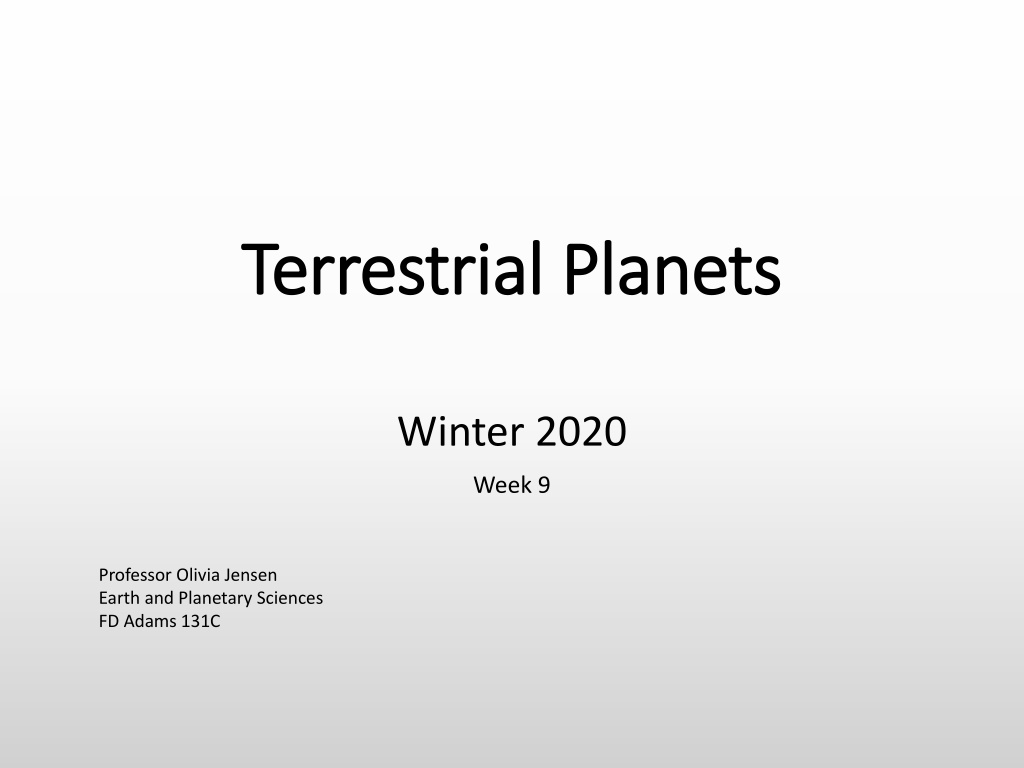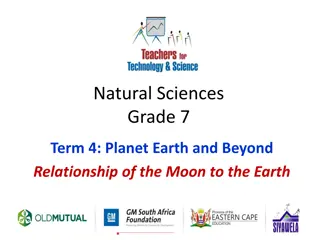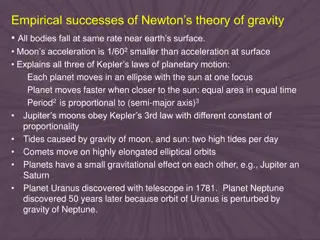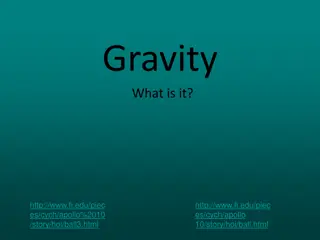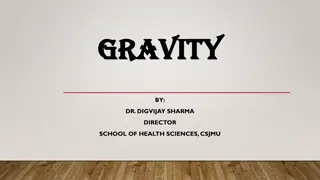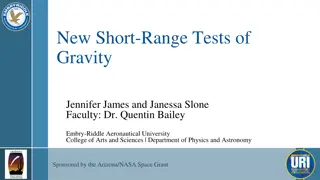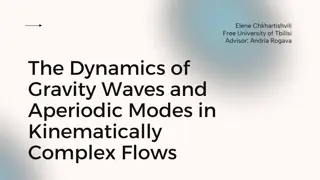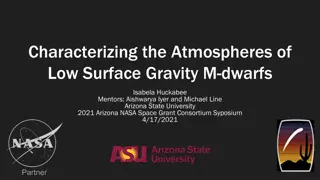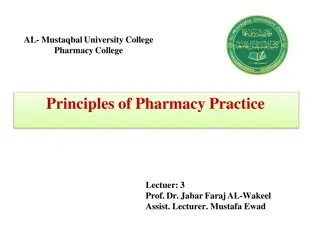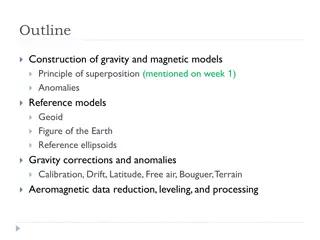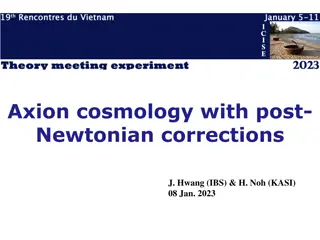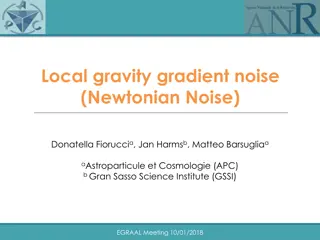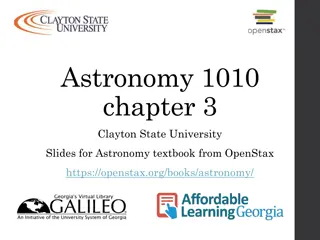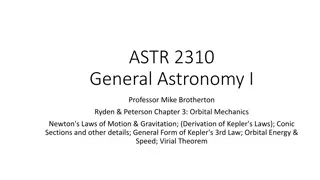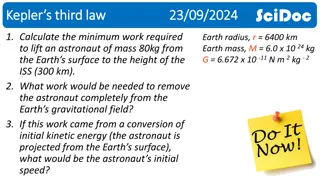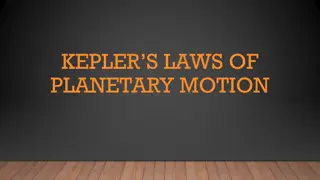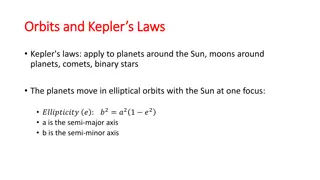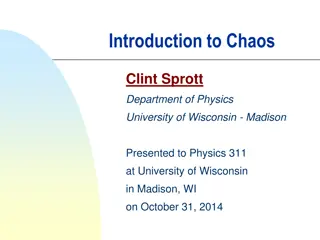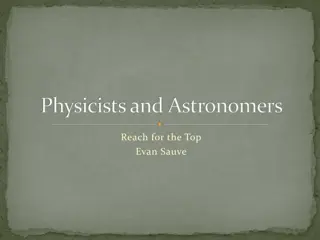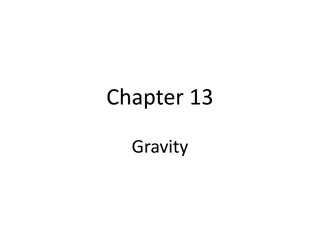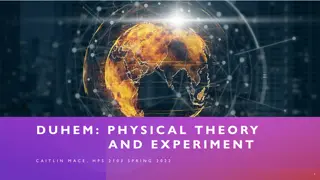Understanding Orbital Dynamics: Kepler's Laws and Newtonian Gravity
Delve into the fascinating world of orbital dynamics as we explore Kepler's Laws and Newtonian Gravity. From understanding the elliptical orbits of planets around the Sun to uncovering the role of gravity in shaping celestial motion, this journey will illuminate the fundamental principles governing the cosmos. Join us in unraveling the mysteries of planetary orbits, celestial mechanics, and the profound impact of Isaac Newton's groundbreaking insights.
Download Presentation

Please find below an Image/Link to download the presentation.
The content on the website is provided AS IS for your information and personal use only. It may not be sold, licensed, or shared on other websites without obtaining consent from the author. Download presentation by click this link. If you encounter any issues during the download, it is possible that the publisher has removed the file from their server.
E N D
Presentation Transcript
Terrestrial Planets Terrestrial Planets Winter 2020 Week 9 Professor Olivia Jensen Earth and Planetary Sciences FD Adams 131C
Orbits During the next two weeks, we will learn something about the orbits of planets and moons and how we may use our knowledge of these orbits to infer their masses and the mass of the Sun. On Thursday, following the review of Quiz#3, I shall take you to a video that argues for the use of such knowledge to infer the existence of dark matter in galaxies. Note that Vera Rubin, she who confirmed the existence of dark matter and who might be seen as the star of the video, died December 25, 2016.
Orbital dynamics, Keplers Laws and Newtonian Gravity While the ancient Greeks knew that the Earth was spherical they actually had a very good idea of its size too and that the planetary system, then known to comprise only the 6 inner planets, was most simply viewed from a heliocentric (Sun-centred) perspective, Europeans did not accept this knowledge until Nicolas Copernicus in the early 1500s and Galileo Galilei a century later promoted the heliocentric viewpoint*. *Practically and more accurately, it would be well to consider the centre of mass of the Solar System of Sun and planets to be fixed and the Sun and all the planets in orbit about this barycentre .
Keplers Laws Kepler s first law: The orbit of a planet about the Sun is an ellipse with the Sun at one focus. Kepler s second law: A line joining a planet and the Sun sweeps out equal areas in equal intervals of time. Animations: Bill Drennon, Central Valley Christian High School, Visalia, CA
Keplers Laws Kepler s third law: The square of a planet s siderial period (i.e., referenced to the distant stars) is proportional to the cube of the length of its orbit s semi-major axis. That is ?? ??where T is the orbital period and a is the semi-major axis of the orbital ellipse.
Newtons Gravity Kepler s Laws were studied by Isaac Newton (1642- 1727) who recognized that a field of force which he called gravity was fundamentally responsible for the ordered, Keplerian, motion of the planets. In his Philosophae naturalis principia mathematica, published in 1687, he showed how the force of gravity constrained planets into precisely Keplerian orbits.
Orbits and Gravity What speed ?? allows for a stable circular orbit? What if the speed is not exactly ?? ? ?? ?? ??= ?? ?? Gravity provides the centripetal force that holds the planet in circular orbit. ??= ?? ?? ? < ??: in spiral ? = ???: parabola ??< ? < ???: ellipse ? > ???: escape hyperbola ? ? ? ???? ? ??=
Weighing the Sun Gravity balances the necessary centripetal force holding a planet in orbit: ?? ?? ??= Noting that for Earth, the orbital speed is ??=??? where ? is our 1-year orbital period. With a little mathematical reduction, we find that ??=?? ? ? ? a statement of Kepler s 3rd Law. Knowing G G, , measuring T T and r r, we find the mass of the Sun: ? =? ?? ?? ? ???? ? , ? , ?? ? ??
Weighing the Earth Gravity provides the necessary centripetal force holding the Moon in orbit about the Earth. We only need know the period of the Moon s orbit about the Earth, or more properly about the Earth-Moon barycentre* in order to determine Earth s mass. The Moon orbits the Earth in 1 month (by definition). But, what is the length of the month? There are several measures of the month but only one of them is the appropriate measure of the time of orbit. Earth-Moon barycentre Barycentre of the Solar System? All the planets tug on the Sun and as they orbit, the Sun too orbits the barycentre of the Solar Sysem. *The Earth-Moon barycentre is displaced from the centre of mass of Earth. For ?, the Earth-Moon distance, the displacement of the barycentre from the Earth s centre of mass in the direction toward the Moon is obtained as: ? = ? ?? ? 4636km
Measure of the Month Lunar (or Synodic) Month: Once each lunar month, the Moon comes to Full Moon phase. This happens during each month at the moment when the line from the Sun-to-Earth-to-Moon is most nearly a straight line. (Mean period: 29.531 days) Siderial month: The interval between two successive times at which the Moon appeared in the same location relative to the distant stars in the night sky. (Mean period: 27.322 days) Draconitic month: The interval between two successive times that the Moon appears highest in the night sky. This is referenced to Earth geography, to the latitude of the observer. (Mean period: 27.212 days) Tropic month: Referenced to the Earth s rotation axis that appears to pierce the celestial sphere near Polaris, the North Star, we measure the angular distance between the Moon and this axis. The angular distance repeats in 1 Tropic Month. (Period: 27.331(582) days) The tropic month is the orbital period of the Moon.
Eclipses Past and future solar eclipses Past and future lunar eclipses
Tidal forces on Earth The Moon and Sun exert differential tidal forces on the body, water and atmosphere of Earth. On that side of the Earth closest to the Moon or Sun, the gravitational pull towards the Moon or Sun is greater than it is on the opposite. This creates a differential force across the body of Earth and the body of the Earth, its oceans and atmosphere adjust through what we observe as tides . There are body, ocean and atmospheric tides. Ocean and atmospheric tides involve movable fluids and are, thus, more difficult to calculate than is Earth s body tide. Let us look into the body tide.
Earths Body Tide The solar bulge is always directed towards the Sun (noon) or nadir (midnight). It follows a 24 hour cycle. The lunar tidal bulge is delayed by an average of 51 minutes per day. The tide we feel is the sum of the two effects at any time.
Tidal beating The 24-hour Solar tide, with two high tides and 2 low tides each day, beats with the 24 hour 51 minute lunar tide. The lunar tide is not exactly periodic at 24 hour 51 minute because the Lunar orbit is inclined relative to Earth s spin axis. The two tidal forcings add together to produce the measureable body tide.
Black hole at Galactic Centre Andrea Ghez Andrea Ghez, of UCLA, used a procedure, very similar to that described previously for weighing the Sun, to measure the unseen mass at our galactic centre. Having observed the orbits and periods of stars in the direction of the galactic centre, she and her colleagues determine that there is an invisible supermassive gravitational centre, having a mass of almost 4 106? , at the centre of our Milky Way. Animation of stars orbiting the black hole Animation of stars orbiting the black hole
The Mass of Dark Matter Vera Rubin Vera Rubin looked at the orbital speeds of stars well outside the core zone of many galaxies. She studied the rotation curve to show that stars at distance from galactic centres were orbiting much faster than could be accounted for by the observable baryonic matter of the galaxies. Our analysis above obtains the expected velocity of orbit due to mass within the orbital path: ??? ? ?? = She confirmed the existence of Dark Matter which seems to comprise about 28% of everything in the Universe.
Spring Break! Take some time out to look at the sky and to look at the rocks that we walk on Enjoy the week!
A video that concerns the confirmation of the existence of dark matter.
